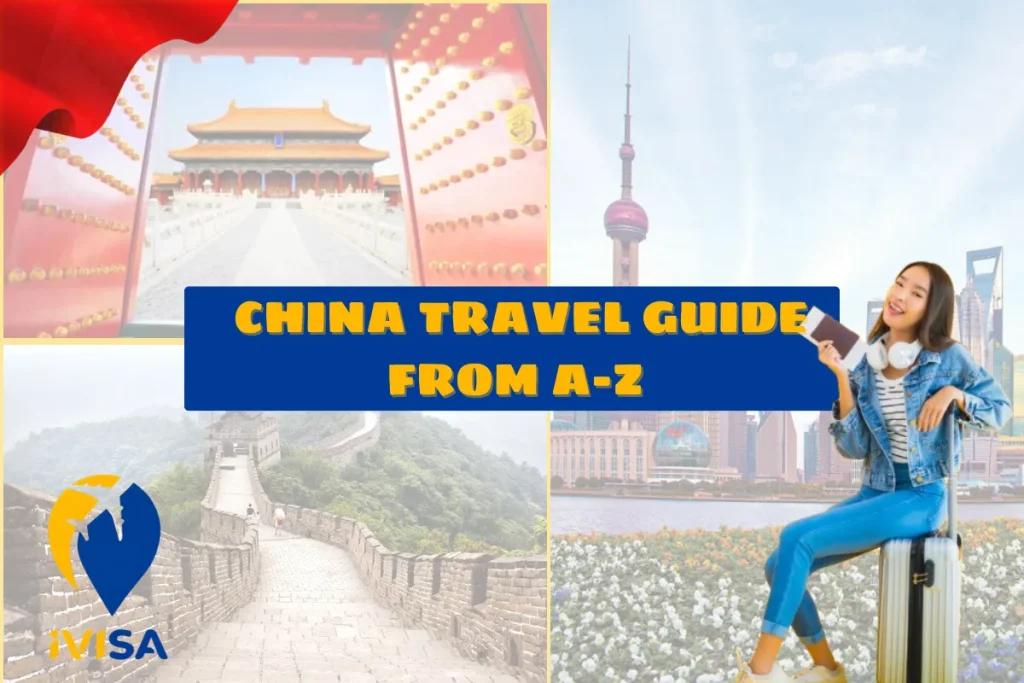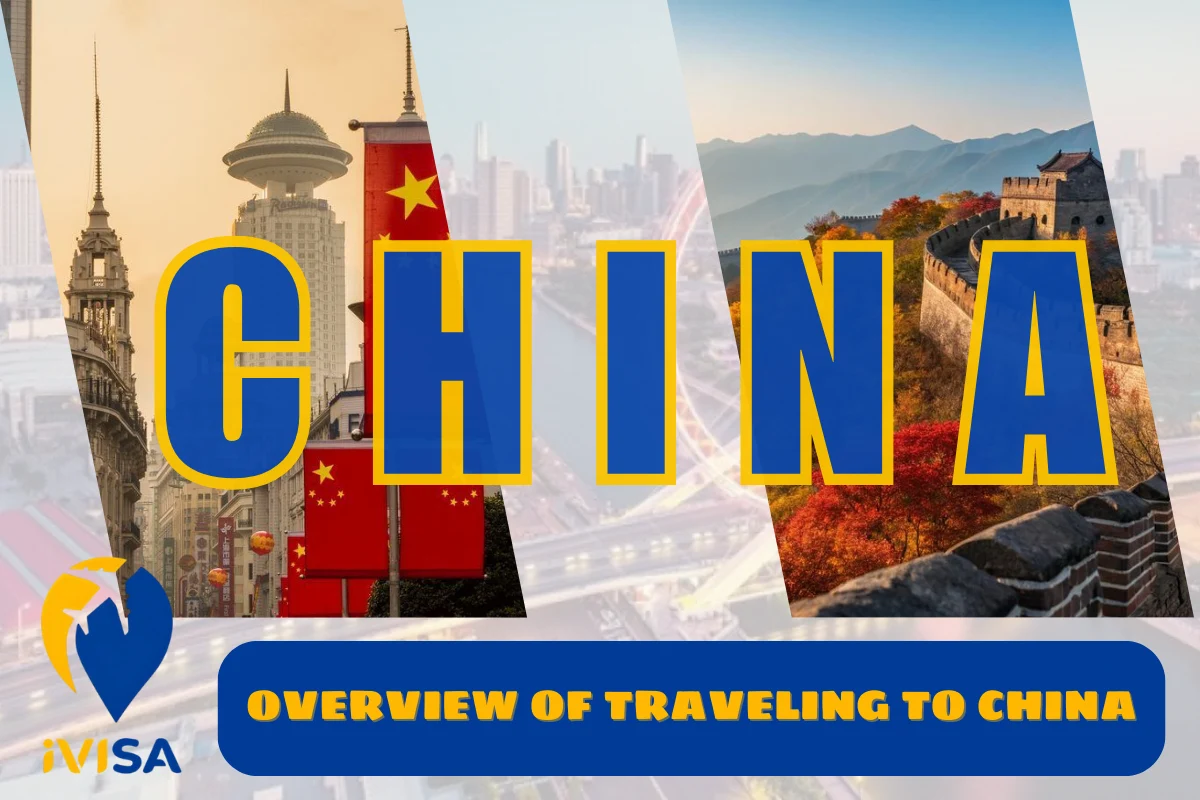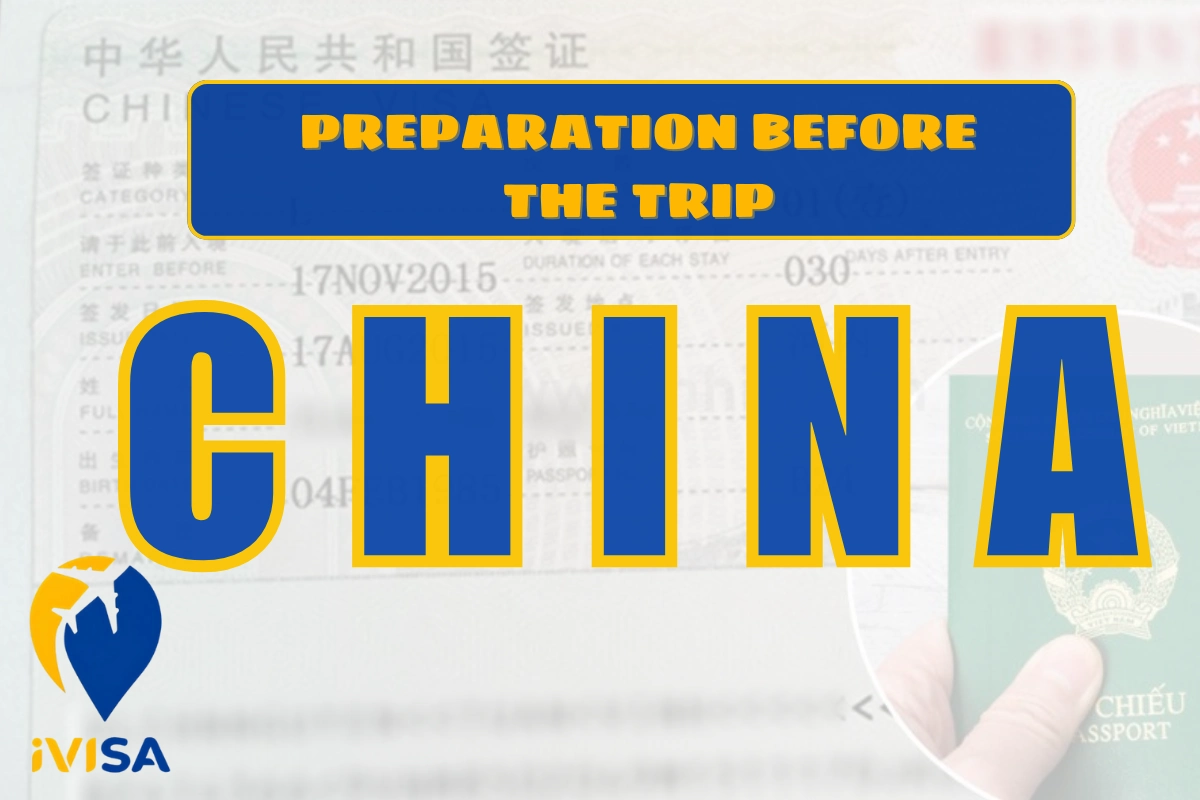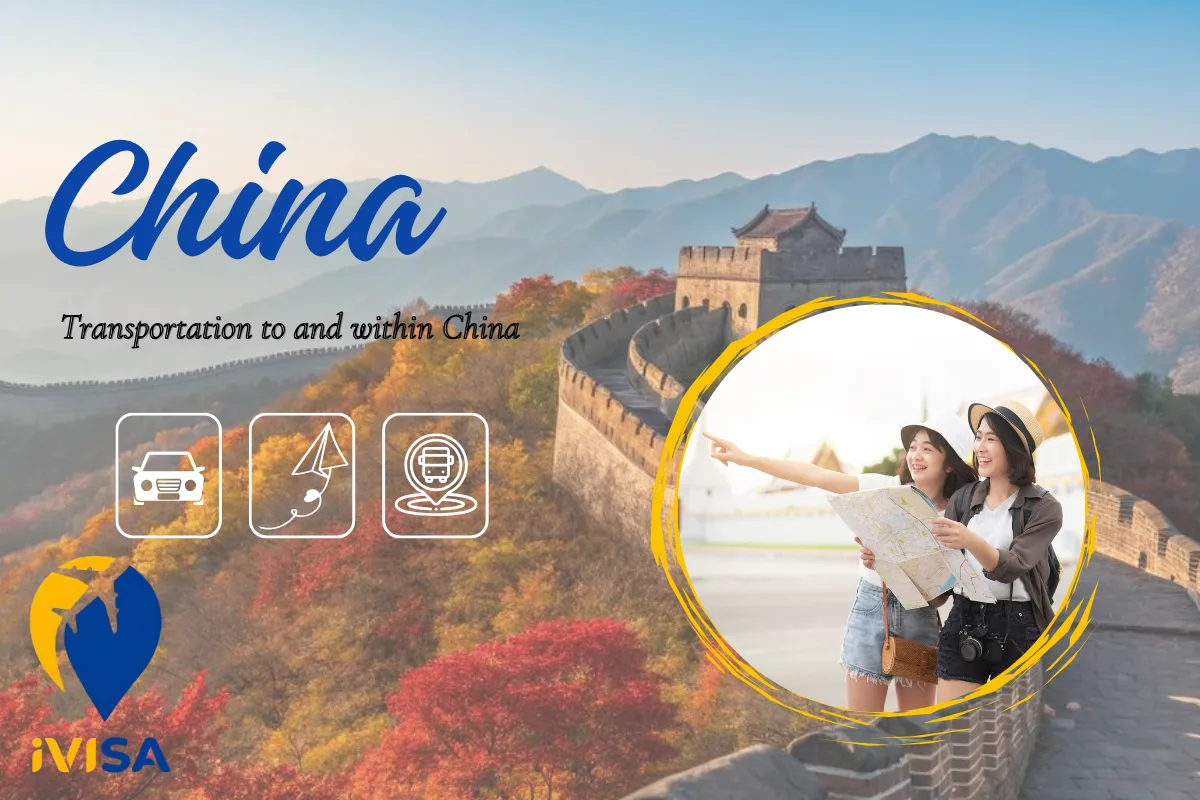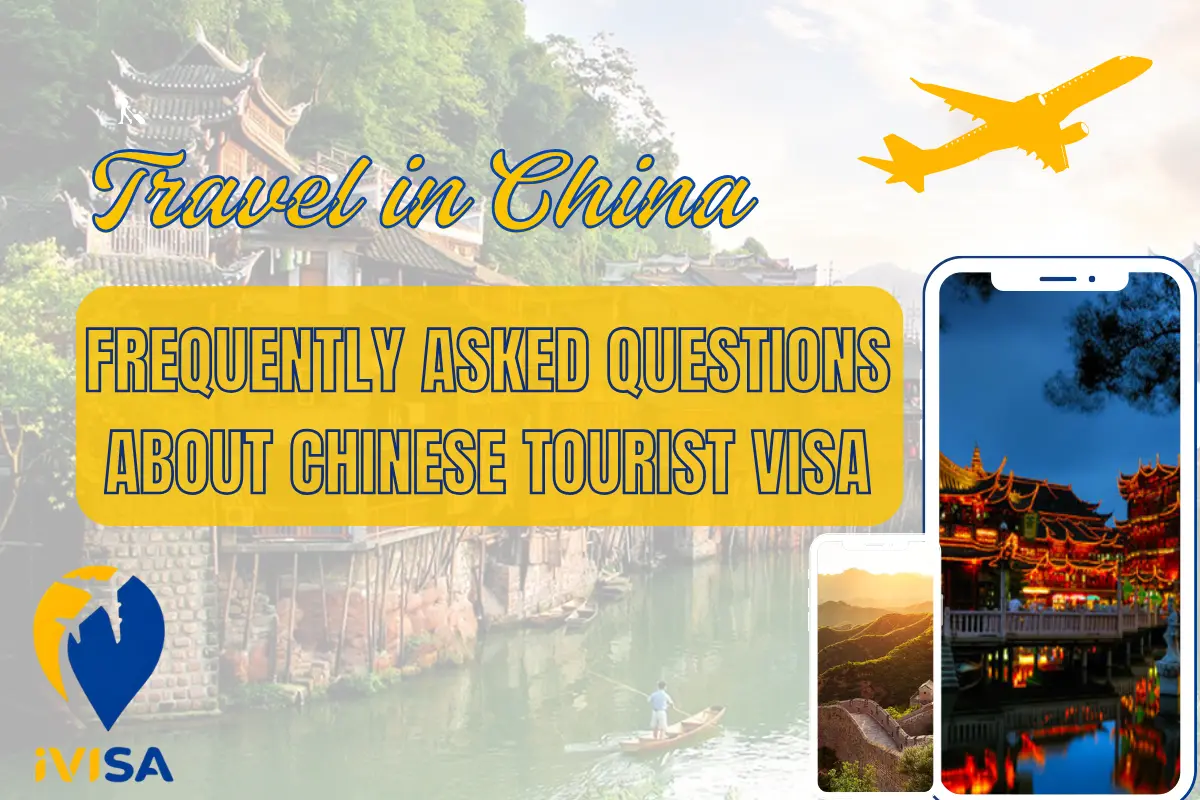China is one of the most fascinating destinations in Asia. The country preserves a long history and culture, along with breathtaking landscapes. Visitors can be amazed by the Great Wall, explore the ancient Forbidden City, or experience the modern lifestyle of Beijing and Shanghai. Each region offers its own unforgettable charm. Therefore, iVISA’s detailed China travel guide will help you explore this vast country more easily and completely.
Overview of Traveling to China
Why does China always remain on the list of Asia’s most attractive destinations? What makes millions of tourists from all over the world come here every year?
China is home to thousands of years of culture and history, with landscapes ranging from majestic mountains and endless deserts to bustling metropolises. A trip can take you from the impressive Great Wall and the ancient Forbidden City to the glamorous Shanghai and vibrant Beijing. Each journey is a unique experience, leaving unforgettable memories.
Besides sightseeing, many travelers also wonder about practical matters such as what to wear in China, what to buy, or which gifts to bring back that are both convenient and meaningful.
So, who is this trip suitable for? The answer is everyone. Solo travelers will enjoy flexibility, groups of young people will find new adventures, families can share bonding moments, while business travelers can combine work with leisure. To make the trip enjoyable and cost-efficient, a detailed China travel guide is an essential companion.
The Best Time to Visit China
Traveling in China attracts visitors not only because of its diverse landscapes but also because of its distinct seasonal changes. The climate ranges from freezing cold to warm temperatures throughout the year. Each season has its own unique charm, so how should travelers choose the right time to visit?
Spring (March–May): The Blooming Season
Spring is one of the most popular times to travel in China. The average temperature ranges from 10–20°C, and the fresh air creates a pleasant feeling for visitors. During this season, China is covered with vibrant blossoms: pink cherry blossoms in Wuhan and bright peonies in Luoyang. If you want colorful check-in photos, this is the perfect time. Travelers only need to bring a light jacket and comfortable sneakers to move around with ease.
Summer (June–August): Exploring Refreshing Plateaus
Summer in Beijing or Shanghai often sees high temperatures, reaching up to 35°C on many days. However, the summer climate in China is extremely pleasant in the plateau regions. Tibet and Jiuzhaigou become ideal destinations with temperatures around 15–20°C. The majestic mountains and crystal-clear lakes create a unique travel experience. That is why many people choose to travel to China in the summer to escape the heat and enjoy the fresh air. A China travel guide always recommends preparing lightweight clothing, while also bringing a windbreaker if you plan to visit the plateaus.
Autumn (September–November): The Most Beautiful Season of the Year
Autumn in China is considered by many as a dream journey. The temperature ranges from 15–25°C, with clear blue skies and gentle golden sunlight. This is the best time to admire the red maple leaves in Beijing or stroll along the golden streets of Hangzhou. In particular, traveling in October allows you to experience the National Day celebration and many major cultural events. However, as this is peak season, travelers should book tickets and accommodation early to avoid overcrowding. Recommended clothing includes a light jacket and a thin scarf to keep warm in the evenings.
Winter (December–February): A World of Snow and Ice Festivals
No China travel guide would be complete without mentioning winter and its unique snowy experiences. In the north, temperatures often drop below –10°C, and in Harbin, they can reach –20°C. The city is famous for hosting the world’s largest ice and snow festival, which attracts millions of visitors every year.
If you love winter sports, you can enjoy skiing at modern resorts. Meanwhile, southern China has milder weather, around 10–15°C, which is suitable for those unaccustomed to severe cold. For winter trips, you should prepare a thick jacket, gloves, and a wool hat. If traveling to the south, a medium-weight coat will be enough. The weather is quite similar in Japan; you can also check the best time to travel Japan there if you have other plans to visit this country.
Preparation Before the Trip: Documents, Visa, Health, Insurance, and Useful Apps
A smooth trip always begins with careful preparation. In a China travel guide, preparing documents, visa, health, and useful applications plays a vital role. Once you master these steps, exploring this vast and culturally diverse country will be easier, safer, and more fulfilling.
Documents and China Tourist Visa
A visa is a mandatory requirement for Vietnamese citizens to enter China. According to most China travel guides, the visa application file usually includes:
- Original passport valid for at least 6 months with a minimum of 2 blank pages.
- A 4x6cm passport photo with a white background, taken within the last 6 months.
- A clearly completed and accurate visa application form.
- Round-trip flight ticket, hotel booking, and a detailed itinerary to prove your travel plan.
Round-trip airfare, hotel booking, and a detailed itinerary are required to prove your travel plans. For more information, you can refer to the guide on applying for a Chinese tourist visa to be better prepared.
Travel Insurance – Essential Peace of Mind
Travel insurance not only covers emergency medical expenses but also protects you from risks such as lost luggage, flight cancellations, or missed connections. It is a smart investment that no traveler should miss in their China travel guide.
Essential Apps for Traveling in China
China has specific internet restrictions, so it is important to prepare applications before your trip:
- A stable VPN to access Google and Facebook.
- WeChat – a widely used tool for communication and payment.
- Baidu Maps or Amap as alternatives to Google Maps.
- Translation apps such as Baidu Translate or Pleco.
Equipping yourself with these tools will help you adapt quickly and enjoy a convenient travel experience in China. At the same time, do not forget to check in advance what to buy when traveling to China to be well-prepared for your journey. If you find the preparation process difficult, especially when it comes to the visa application, you can consider iVISA’s Chinese tourist visa service. We will receive your information and provide consultation so that you can enjoy the best possible travel experience.
Transportation to and within China
One of the most important steps in planning is choosing how to travel to China. Depending on your time, budget, and departure point, you can choose between flights, trains, or long-distance buses.
Traveling from Vietnam to China
- Flights – Fast and Convenient: According to Vietnam Airlines, there are currently several direct flights from Hanoi/Ho Chi Minh City to Beijing, Shanghai, and Guangzhou. Airlines such as China Southern, Air China, and China Eastern also operate frequent routes. The flight takes only 3–4 hours, and round-trip tickets range from 90–260 USD if booked early on platforms like Skyscanner or Expedia.
- Trains – A Leisurely Experience: If departing from Lao Cai, you can take the international train to Kunming (9–10 hours, about 40–50 USD per trip, according to China Railway). Traveling by train allows visitors to enjoy the border scenery and have more time to rest.
- Long-Distance Buses – A Budget-Friendly Option: From Lang Son, you can take an intercity bus to Nanning (6–8 hours, priced at 25–30 USD per trip). This is a popular choice for those living near the northern border.
Getting Around Within China
Once you arrive in this vast country, you will find that China’s transportation system is among the most modern and diverse in the world. In almost every China travel guide, the three most mentioned options are high-speed trains, the metro, and the ride-hailing app Didi.
- High-Speed Trains (Gaotie): A source of national pride, they connect most major cities. The Beijing–Shanghai route takes only 4.5 hours (ticket prices 550,000 – 1,500,000 VND, according to China Highlights). Tickets can be easily booked on Trip.com or the official 12306 app.
- Metro Systems: Available in most megacities such as Beijing, Shanghai, and Guangzhou. A single trip costs only 3–8 RMB.
- Taxi/Didi Chuxing: If you are familiar with Grab in Vietnam, Didi is its equivalent in China. A taxi from Beijing Airport to the city center costs around 100–150 RMB (350,000 – 500,000 VND).
Suggested Itineraries and Highlights in China
| Duration | Main Destinations | Detailed Itinerary |
| 3 Days (Beijing – A Blend of Tradition and Modernity) | Tiananmen Square, Forbidden City, Great Wall of China | Day 1: Stroll around Tiananmen Square, explore the Forbidden City, and enjoy local street food at Wangfujing Pedestrian Street.
Day 2: Hike the Great Wall, have a picnic outdoors, and check in at scenic viewpoints. Day 3: Discover Panjiayuan Antique Market and experience authentic Beijing street food. |
| 5 Days (Shanghai – Hangzhou, Vibrant & Romantic) | Oriental Pearl Tower, Disneyland, West Lake | Day 1: Take photos at the Bund with its impressive skyline.
Day 2: Spend a fun-filled day at Disneyland – a paradise of thrilling rides. Day 3: Relax at West Lake – go boating and admire the sunset views. Day 4: Visit Wuzhen Ancient Town, known as the “Venice of the East.” Day 5: Go shopping and enjoy nightlife at the bustling Nanjing Road. |
| 7 Days (Zhangjiajie – Fenghuang Ancient Town, Nature & Culture) | Avatar Mountain, Tianmen Mountain, Tuojiang River | Days 1–3: Conquer Avatar Hallelujah Mountain, chase the clouds, and take photos from stunning suspension bridges.
Days 4–5: Explore Tianmen Mountain – walk on the Glass Skywalk and ride the world’s longest cable car. Days 6–7: Wander through Fenghuang Ancient Town, take a boat ride on the Tuojiang River, and enjoy the vibrant atmosphere of the old town at night. |
FAQs about Traveling to China You Should Know
Planning a trip to China is not just about choosing destinations or booking tickets; it also requires detailed preparation regarding clothing, gifts, food, and real-life experiences. Here are some frequently asked questions (FAQs) about traveling to China:
What should you keep in mind when traveling to China in summer?
Summer in Beijing or Shanghai can be quite hot, with temperatures reaching up to 35°C. If you wonder “what to wear in China,” prioritize light, breathable clothing made of cotton or linen, along with a wide-brimmed hat and sunscreen to protect your skin.
In highland areas such as Tibet or Jiuzhaigou, the climate is cooler, ranging from 15–20°C. Besides summer clothes, bring a light jacket for early mornings or chilly evenings. If you travel to China in October, the weather is pleasant, and a light jacket is recommended to fully enjoy the autumn season. If you want to enjoy an even better summer experience, you can also look into the best travel times in Dubai to expand and diversify your travel plans.
Do you need to know Chinese for independent travel?
You can absolutely travel to China independently without knowing Chinese. Major cities have English signs, and hotel or shopping mall staff usually speak basic English.
However, if you want to explore more deeply, visit local markets, or enjoy street food, knowing a few basic phrases or using translation apps like Baidu Translate, Pleco, combined with WeChat, will make your experience smoother.
What souvenirs should you buy in China?
The question “what to buy in China” is popular among travelers. Here are some gift ideas:
- Chinese tea: Longjing (Hangzhou), Oolong (Fujian), priced around 200–400 CNY per 100g.
- Suzhou silk: Scarves, robes, and soft, luxurious shawls, priced from 150–300 CNY.
- Handicrafts: Calligraphy brushes, scroll paintings, small ceramic figurines, priced around 50–200 CNY.
What foods should you try in China?
Food is an essential experience when traveling to China, regardless of the season:
- Beijing: Peking duck with crispy skin and tender meat, served with pancakes and green onions, priced from 80–150 CNY per person.
- Sichuan: Sichuan hotpot, spicy chicken in chili sauce, offering a strong flavor experience, priced 50–120 CNY per person.
- Shanghai: Xiaolongbao (soup-filled steamed buns) and fresh seafood, priced 40–80 CNY for 10 pieces.
- Guangzhou / Guangdong: Diverse dim sum, served with hot tea, priced from 30–70 CNY per person.
Additionally, don’t miss street food, from sweet pastries and grilled skewers to unique fruit desserts. When traveling independently in China, enjoying local cuisine allows you to experience the culture in the most authentic way.
A journey to China offers countless unforgettable experiences. With this A–Z China travel guide, you now have all the essential information to prepare for your adventure. It is time to plan your trip, pack your clothes, and get ready to explore.
iVISA Property & Citizenship
- Add: Số 99 Nguyễn Thị Nhung, phường Hiệp Bình, TPHCM
- Hotline: 0937 999 610
- Email: info.ivisatravel@gmail.com

